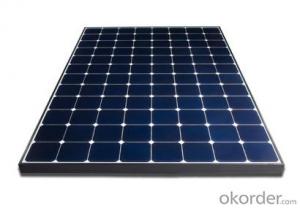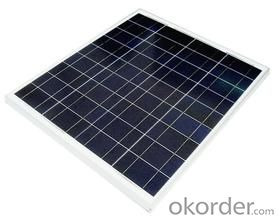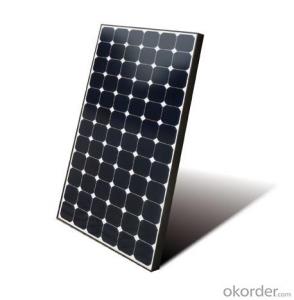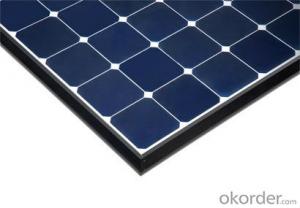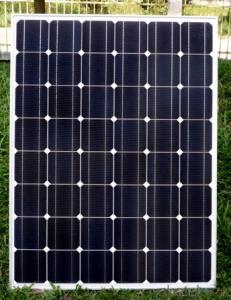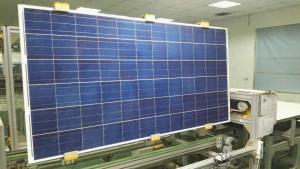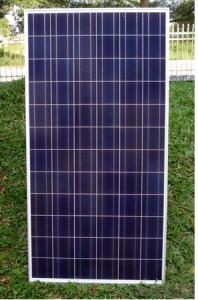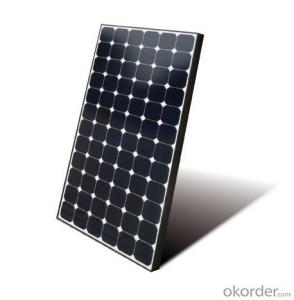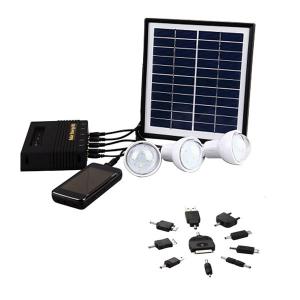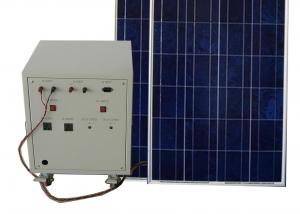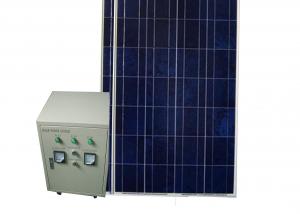Sunshine Solar Energy Systems CNBM Poly 1000W Off Grid Solar System with 10 Years Warranty
- Loading Port:
- Shanghai
- Payment Terms:
- TT OR LC
- Min Order Qty:
- 100 watt
- Supply Capability:
- 1000 watt/month
OKorder Service Pledge
OKorder Financial Service
You Might Also Like
Specification
CNBM Poly 1000W Off Grid Solar Sytem with 10 Years Warranty
Product description
Off-the-grid is a system and lifestyle[1] designed to help people function without the support of remote infrastructure, such as anelectrical grid. In electricity, off-grid can be stand-alone power system or mini-grids typically to provide a smaller community with electricity. Off-grid electrification is an approach to access electricity used in countries and areas with little access to electricity, due to scattered or distant population. The term off-the-grid (OTG) can refer to living in a self-sufficient manner without reliance on one or more public utilities. People who adopt this lifestyle are called off-gridders.[2]
The photovoltaic off-grid market has been researched by international institutes, universities and market research companies. The cumulative installed PV capacity is estimated in 2010 between 1 and 2 GW[16] depending on the source. The market research company Infinergia has gone further by mapping national cumulative installed off-grid PV capacity on 100 countries worldwide.[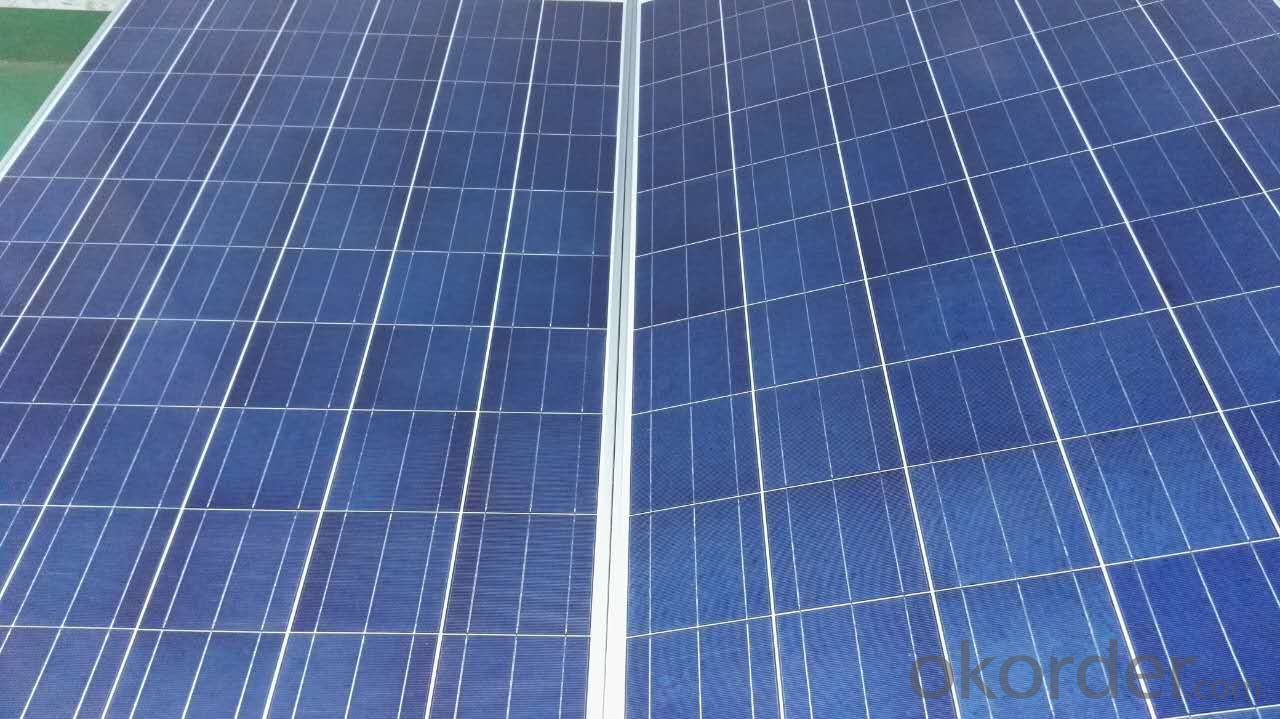
Application
Residential
Commercial
Industrial
Feature
Off-the-grid homes are autonomous; they do not rely on municipal water supply, sewer, natural gas, electrical power grid, or similar utility services. A true off-grid house is able to operate completely independently of all traditional public utility services. The idea has been recently popularized by certain celebrities including Ed Begley, Jr.[3] who stars in the Living with Ed[4] television show on the Home & Garden Television (HGTV) network. Actress Daryl Hannah promotes off-grid living and constructed her home in Colorado according to those principles, as does survival expert and Dual Survival co-star Cody Lundin,[5] who lives in a self-designed, passive solar earth house in the high-desert wilderness of Northern Arizona, collecting rainwater, composting waste, and paying nothing for utilities.[6][7]
Packaging
With carton and box
- Q: Can solar energy systems be used in powering movie theaters or entertainment venues?
- Yes, solar energy systems can definitely be used to power movie theaters or entertainment venues. These systems can be installed on the roof or surrounding areas of the facility to generate clean and renewable energy. With advancements in solar technology, such as more efficient panels and energy storage solutions, it is increasingly feasible to meet the high energy demands of these venues. Additionally, the use of solar energy can reduce operating costs, contribute to environmental sustainability, and serve as a positive example for promoting renewable energy adoption in the entertainment industry.
- Q: Can a solar energy system be integrated with an existing electrical system?
- Yes, a solar energy system can be integrated with an existing electrical system. In fact, it is quite common for people to install solar panels on their homes or businesses and connect them to their existing electrical systems. This integration typically involves the installation of an inverter, which converts the DC power generated by the solar panels into AC power that can be used to power appliances and electrical devices. The inverter is then connected to the existing electrical system, allowing the solar energy system to supplement or even replace the electricity provided by the grid. This integration allows for the efficient and sustainable use of solar energy while still maintaining the ability to draw electricity from the grid when needed. It also enables the possibility of net metering, where excess electricity generated by the solar panels can be fed back into the grid for credit or compensation. With proper planning and installation, integrating a solar energy system with an existing electrical system can significantly reduce energy costs, decrease reliance on fossil fuels, and contribute to a cleaner and more sustainable energy future.
- Q: What is the difference between a solar lease and a solar purchase?
- A solar lease involves renting the solar panels from a third-party provider, typically with no upfront costs but with monthly lease payments. On the other hand, a solar purchase involves buying the solar panels outright, either through a loan or with cash, and owning the system. With a purchase, there may be upfront costs, but the homeowner receives financial benefits such as tax credits and energy savings.
- Q: How does the cleanliness of solar panels affect energy production?
- The efficiency and energy production of solar systems heavily rely on the cleanliness of solar panels. When solar panels become dirty or are covered in dust, debris, or other contaminants, their ability to convert sunlight into electricity is significantly reduced. Dirt, dust, and pollutants on the surface of solar panels act as a barrier to sunlight, preventing a substantial amount of light from reaching the solar cells below. This obstruction hampers the panels' capacity to absorb and convert sunlight into usable energy. As a result, the energy production of the solar system declines. Furthermore, the accumulation of dirt and dust particles on the panel's surface can lead to a decrease in the overall performance of the solar cells, a phenomenon known as the "soiling effect." This effect can be particularly impactful in regions with high levels of air pollution or prone to dust storms. To ensure optimal energy production, regular cleaning and maintenance of solar panels are essential. By keeping solar panels clean and free from debris, the amount of sunlight reaching the solar cells is maximized, resulting in higher energy output. Studies have demonstrated that even a thin layer of dirt can reduce the efficiency of solar panels by up to 20%. Moreover, the cleanliness and energy production of solar panels are influenced by their angle and orientation. Panels installed at steeper angles or equipped with self-cleaning mechanisms, such as rainwater runoff, are less susceptible to dirt accumulation, enabling them to maintain higher energy production levels. In conclusion, the energy production of solar panels is directly affected by their cleanliness. Regular cleaning and maintenance are crucial to ensure the effective absorption of sunlight and its conversion into electricity. By keeping the panels clean, their efficiency and overall energy output can be maximized, promoting more cost-effective and sustainable energy generation.
- Q: Can solar energy systems be used for heating and cooling homes?
- Solar energy systems have the potential to be utilized for both heating and cooling homes. The energy from the sun can be captured by solar panels or solar water heaters to generate electricity or heat, which can then be used to power heating and cooling systems within homes. For heating purposes, there are various methods in which solar energy can be employed. Solar thermal systems can be installed to warm water for radiant floor heating or produce steam for heating purposes. Solar air heating systems are another option, as they can warm the air that can be distributed throughout the house using ductwork and fans. Additionally, solar heat pumps can be utilized to transfer heat from the sun into the home. In a similar vein, solar energy can also be effectively utilized for cooling homes. Solar-powered air conditioning systems can be employed, utilizing solar energy to operate the compressors and fans necessary for cooling. These systems are particularly advantageous in regions with hot climates, where sunlight availability aligns with the need for cooling. The use of solar energy systems for both heating and cooling offers numerous benefits. First and foremost, solar energy is a clean and renewable source of energy, which reduces reliance on fossil fuels and minimizes carbon emissions. Furthermore, the use of solar energy systems provides long-term cost savings, as they decrease or eliminate the need for traditional heating and cooling methods that rely on grid electricity or fossil fuels. Additionally, solar energy systems can be easily integrated into existing homes or included in new construction projects, making them a versatile and sustainable option for heating and cooling residential properties.
- Q: Can a solar energy system be installed in areas with high seismic activity?
- Yes, a solar energy system can be installed in areas with high seismic activity. However, it is crucial to ensure that the system is designed and installed to withstand the potential impacts of seismic events. Several measures can be taken to enhance the system's resilience, such as: 1. Reinforced Mounting Structures: Solar panels are typically mounted on structures, such as rooftops or ground-mounted frames. These structures should be designed to withstand seismic forces, including the possibility of ground shaking. Reinforced materials and additional bracing can be used to make the mounting structures more robust. 2. Flexible Wiring and Connectors: Solar panels are connected through wiring, and special consideration should be given to the installation of flexible wiring and connectors. This allows for some movement during seismic events, reducing the risk of damage or disconnection. 3. Secure Panel Installation: Solar panels should be securely fastened to the mounting structures to prevent them from dislodging during an earthquake. Additional measures, such as using specialized clamps or adhesives, can be taken to enhance the panel's stability. 4. Proper Grounding: Ensuring proper grounding of the system is essential to protect against electrical surges and potential damage caused by seismic events. It is important to follow local electrical codes and guidelines to ensure the system is safely grounded. 5. Regular Inspections and Maintenance: Regular inspections should be conducted to identify any potential issues or damage to the solar energy system. Prompt maintenance and repairs can help mitigate any risks associated with seismic activity. By following these guidelines and working with experienced professionals, a solar energy system can be successfully installed and operated in areas with high seismic activity.
- Q: What is the impact of snow or ice on solar energy system performance?
- Snow or ice can have a significant impact on the performance of a solar energy system. When snow or ice covers the solar panels, it prevents sunlight from reaching the surface and reduces the system's energy production. Additionally, the weight of accumulated snow or ice can cause damage to the panels or mounting structures. However, advancements in technology and the tilt of solar panels can help minimize the impact by allowing the snow or ice to slide off more easily. Regular maintenance and cleaning may also be required to ensure optimal performance during winter conditions.
- Q: Can solar energy systems be used for powering electric boats or ships?
- Yes, solar energy systems can be used to power electric boats or ships. Solar panels can be mounted on the surface of the vessel to capture sunlight and convert it into electricity. This renewable energy source can then be used to power the boat's propulsion systems and onboard electrical equipment, reducing reliance on fossil fuels and minimizing environmental impact.
- Q: Can solar energy systems be used for powering refrigeration or cold storage facilities?
- Yes, solar energy systems can be used to power refrigeration or cold storage facilities. Solar panels can generate electricity, which can be used to power refrigeration systems and maintain cold temperatures for storage. This can be achieved through the use of solar-powered refrigeration units or by converting solar energy into electricity and connecting it to existing refrigeration systems. Utilizing solar energy for cold storage facilities can reduce reliance on traditional power sources and decrease carbon emissions.
- Q: Can solar energy systems be used for powering medical facilities or clinics?
- Yes, solar energy systems can be used to power medical facilities or clinics. Solar panels can be installed on the rooftops of these facilities, harnessing sunlight to generate electricity. This renewable energy source can provide a reliable and sustainable power supply, ensuring uninterrupted operation of critical medical equipment, lighting, and air conditioning. Solar energy systems are particularly beneficial in remote and off-grid areas where access to traditional power sources may be limited or unreliable. Additionally, solar power helps reduce operating costs and carbon emissions, making it an environmentally friendly choice for powering medical facilities.
Send your message to us
Sunshine Solar Energy Systems CNBM Poly 1000W Off Grid Solar System with 10 Years Warranty
- Loading Port:
- Shanghai
- Payment Terms:
- TT OR LC
- Min Order Qty:
- 100 watt
- Supply Capability:
- 1000 watt/month
OKorder Service Pledge
OKorder Financial Service
Similar products
Hot products
Hot Searches
Related keywords
